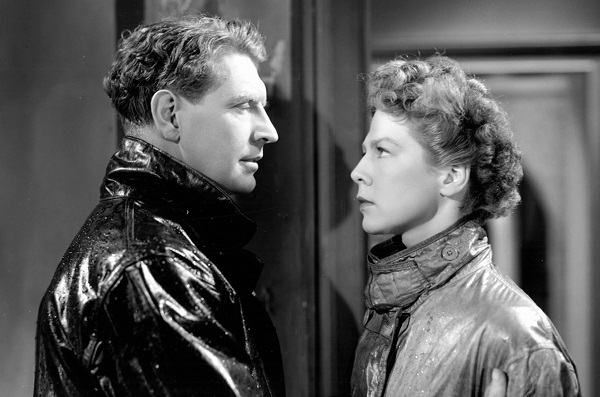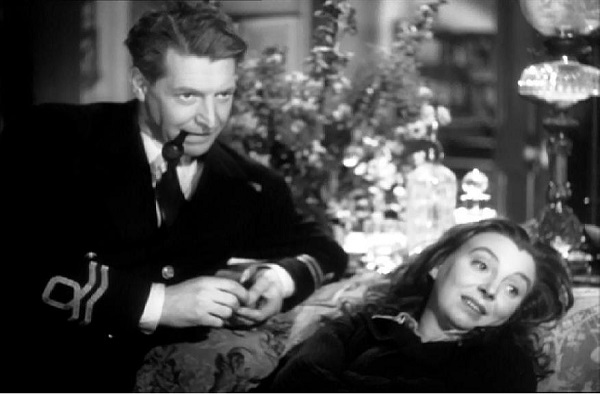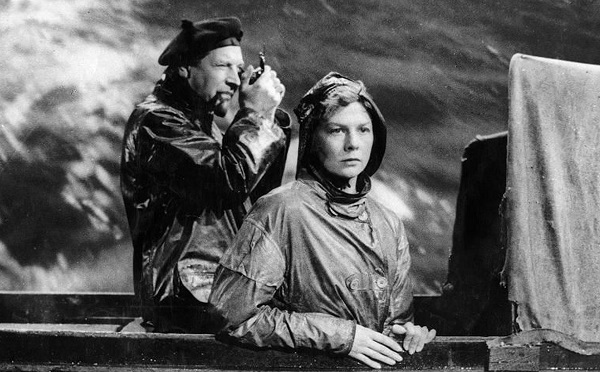Silverscreen standards: I know where I’m going! (1945)
Like Joan, the heroine of Michael Powell and Emeric Pressburger’s 1945 jewel, I know where I’m going!, I thought I knew where I was going as a young woman, but fate changed the course of my journey. My empathy for Wendy Hiller as the ambitious, pragmatic Joan only partially explains my deep affection for this charming wartime romance. It’s no tame fairy tale, with its harsh weather and stubborn Hebridean denizens, but it exists in the mythical atmosphere of haunted castles, legendary whirlpools and sublime romantic landscapes. With this in mind, the writing/directing team unfolds a story of two people whose fate seems determined despite the heroine’s best efforts to stick to her original plan.
Hiller plays Joan Webster, a middle-class Englishwoman who aspires to better things and has the chance to get them by marrying the much older owner of a large company. Her groom wants to celebrate their wedding on the remote Scottish island of Kiloran, which he rents from her laird, so Joan sets off from England to the rugged Hebrides with her wedding dress and a detailed itinerary. The infamous Scottish weather stops them in Mull, where they see the island across the water but are unable to cross because of the dangerous winds. Coastal conditions also become dangerous when Joan develops a friendship with Torquil MacNeil (Roger Livesey), the poor but handsome laird of Kiloran who is currently home on a week’s leave from the Navy.

The film is packed with wonderful characters and performances across the board. Hiller and Livesey – both quite mature for the characters they play – have wonderful chemistry despite their mature, no-nonsense manners. Livesey exudes a particular romantic appeal as the unassuming but competent Torquil; He looks better the more the storm lashes him, making the dramatic scene in the boat all the more exciting, and he cuts a fine figure in his kilt. The determined heroine brought down by unexpected love is a staple of romantic comedy, but the narrative and story setting treat Joan with a wry humor that laughs at her while still making us sympathize with her. The two leads enjoy ample support from CWR Knight as Colonel Barnstaple, Finlay Currie as the local bosun and Margot Fitzsimons (sister of Maureen O’Hara) as the young bridie, but the scene stealer of it all is Pamela Brown as the gorgeous Catriona Pots. Every time she enters a scene, I’m absolutely mesmerized by her tousled locks and steadfast demeanor, and if she weren’t already married, I’d have trouble cheering Joan on to hook Torquil. Even the smallest roles are played memorably, especially the female characters; veteran stage star Nancy Price has a brief but powerful performance as Mrs. Crozier, and young Petula Clark leaves me wishing she had more scenes than the literal but perceptive Cheril.

A good romantic story would do for many movies, but this picture is great too Movie. It makes the most of every tool at its disposal to create a rich narrative of sights, sounds, and symbols. Erwin Hillier (credited as “Hiller”) offers stunning cinematography that might inspire you to set out for Scotland yourself, and the lively music will stay with you long after the final scene has ended. Powell and Pressburger weave mythical imagery through the rather mundane story of two people drawn into a romance. The whirlpool itself is an apt metaphor for the experience of being drawn in by the power of passion, but the legends of the whirlpool and the cursed castle also provide poignant commentary on the perils of love. However, the rewards may change at the 60th birthdayth
Jubilee celebrations for the older Campbells, whose long and happy union the community joins in celebrating with song and dance. At the end of the film, we wonder what outcome Joan and Torquil will face. We understand that war is returning to the modern world and the laird must return to combat soon, but the uncertainty of that conclusion fits perfectly with the moment the film was made.

Most classic film fans already know and admire the work of Powell and Pressburger and I know where I’m going! is together with one of their most famous collaborations Black Narcissus (1947) and The red shoes (1948). Roger Livesey also stars in Powell and Pressburger’s 1943 film. The Life and Death of Colonel Blimpwhile Wendy Hiller is best remembered for her Oscar-nominated role as Eliza Doolittle Pygmalion (1938). For those who yearn to see the wilderness of Scotland but can’t make the journey personally, this film is a great starting point for a cinematic celebration of the region. I would like to combine it with other classics The 39 steps (1935) or brigade (1954) and turn it into a Burns Night party on a cold January evening.
…
— Jennifer Garlen for Classic Movie Hub
Jennifer Garlen writes our monthly silver screen standards column. You can read all of Jennifer’s Silver Screen Standards articles here.
Jennifer is a former college professor with a PhD in English Literature and a lifelong obsession with film. She writes about classic films on her blog, Virtual Virago, and presents classic film programs for lifelong learning groups and senior communities. She is the author of Beyond Casablanca: 100 Classic Movies Worth Watching and its continuation Beyond Casablanca II: 101 Classic Movies Worth Watchingand she is also co-editor of two books on the works of Jim Henson.









